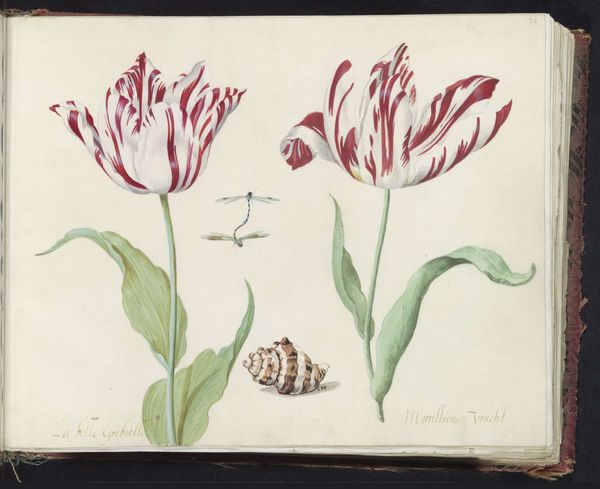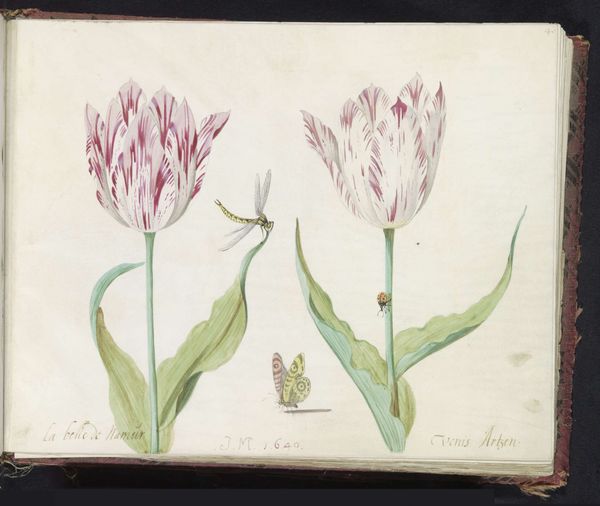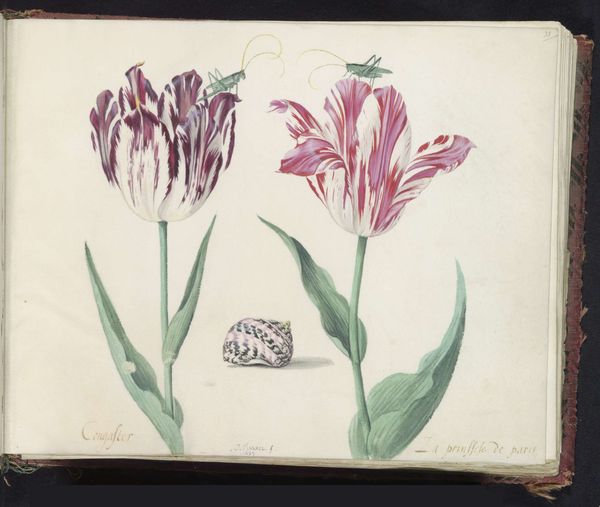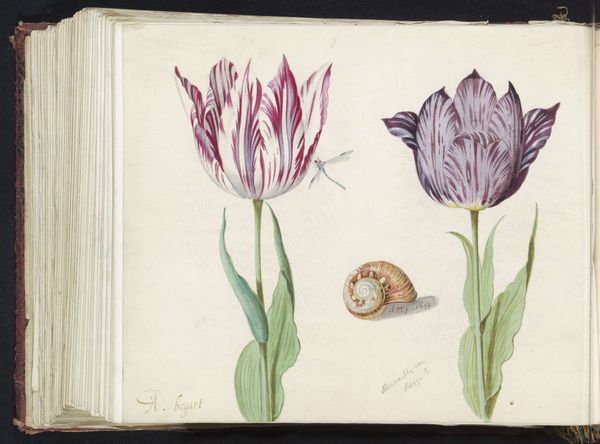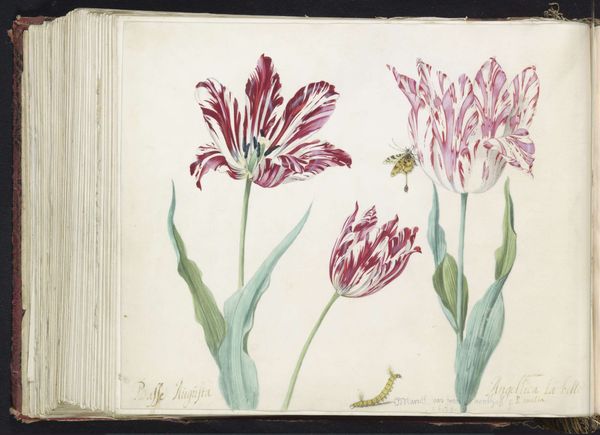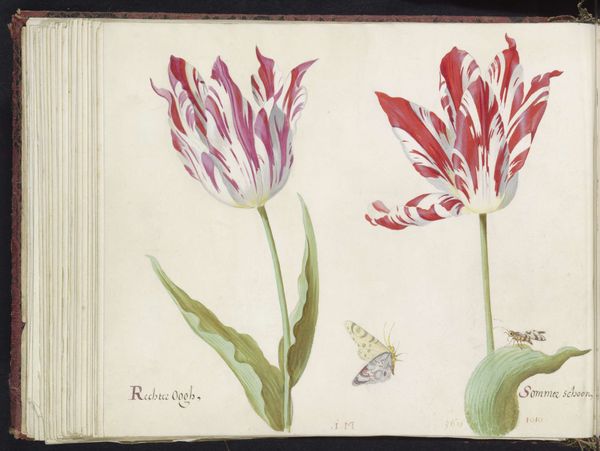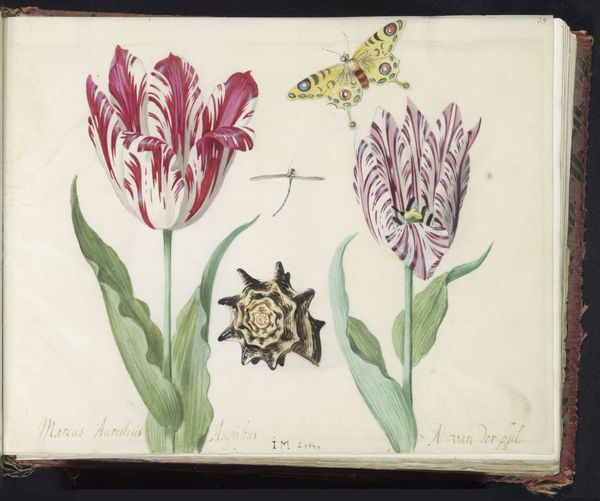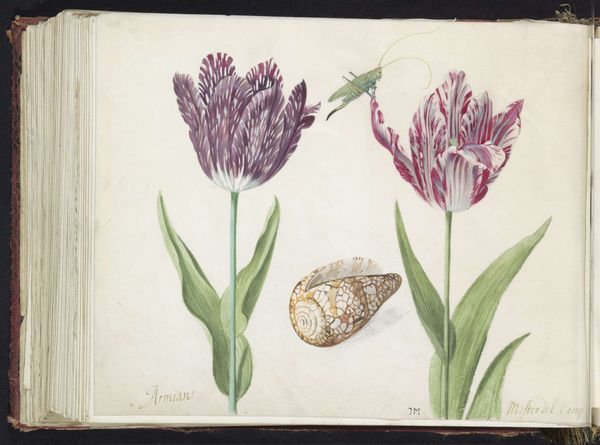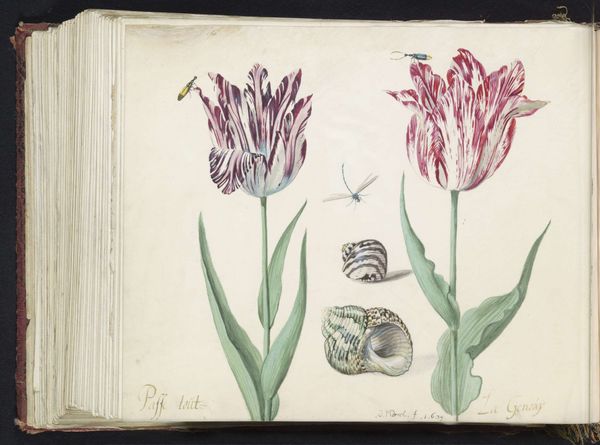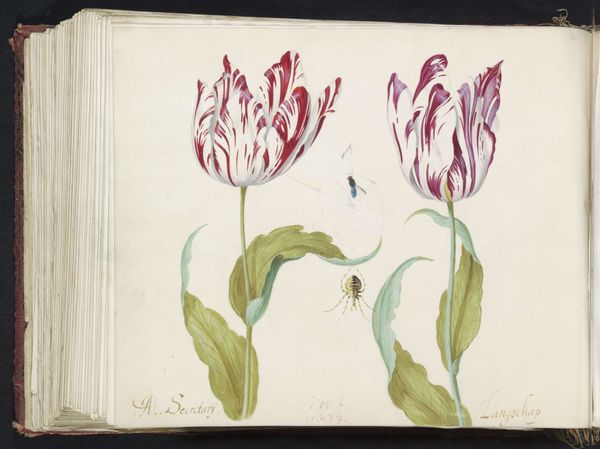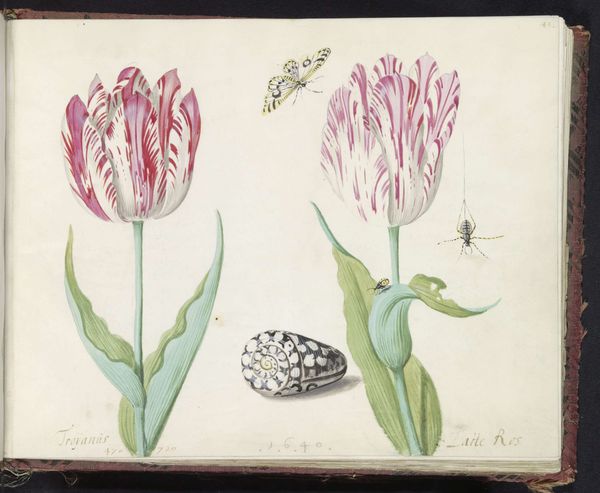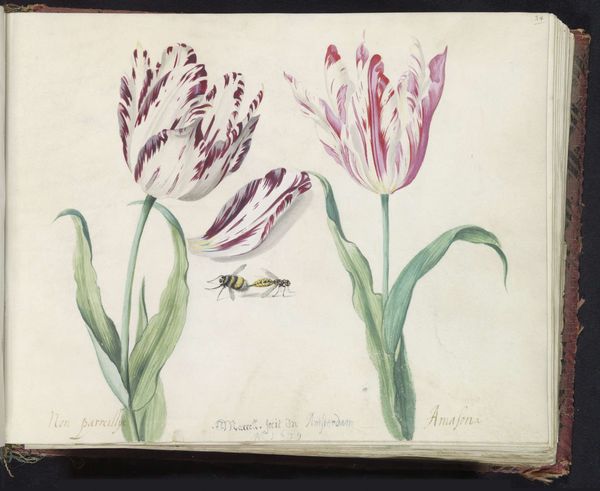
watercolor
#
dutch-golden-age
#
figuration
#
watercolor
#
coloured pencil
#
watercolor
Dimensions: height 265 mm, width 335 mm
Copyright: Rijks Museum: Open Domain
Editor: This watercolor, “Two Tulips with Shell and Ladybug” painted by Jacob Marrel in 1639, presents these vibrant flowers alongside a shell and small insect, creating an unexpected still life. I'm struck by its seemingly simple beauty. What story do you think it’s trying to tell? Curator: I think this image tells a story about desire, economics, and societal shifts during the Dutch Golden Age. It presents tulips as not just aesthetic objects, but as signifiers of wealth and status, deeply intertwined with the speculative frenzy of "tulip mania." Editor: Tulip mania? Curator: Precisely! These tulips aren't just pretty; they represent an obsession that briefly gripped Dutch society. The ladybug and shell also aren't incidental—the ladybug a symbol of prosperity, while the shell connects to trade and the exotic, underlining Holland's growing merchant power. What feelings does this contextualization trigger in you? Editor: It makes me see it differently! It goes beyond just botany. It now feels like a commentary on consumerism and the fragility of wealth. The beauty almost feels...deceptive. Curator: Indeed. Marrel, likely commenting on that very deception, shows us the delicate balance of nature and commerce and its implication on class. And maybe also makes one consider: how are we engaging in a 'tulip mania' of our own today? Editor: That's a great question, and a slightly uncomfortable one. It does make me see how relevant historical context is to understand art’s cultural critique. Curator: Exactly, seeing the threads connecting then and now helps us unravel the social fabric that makes these kinds of artworks resonate even centuries later.
Comments
No comments
Be the first to comment and join the conversation on the ultimate creative platform.

